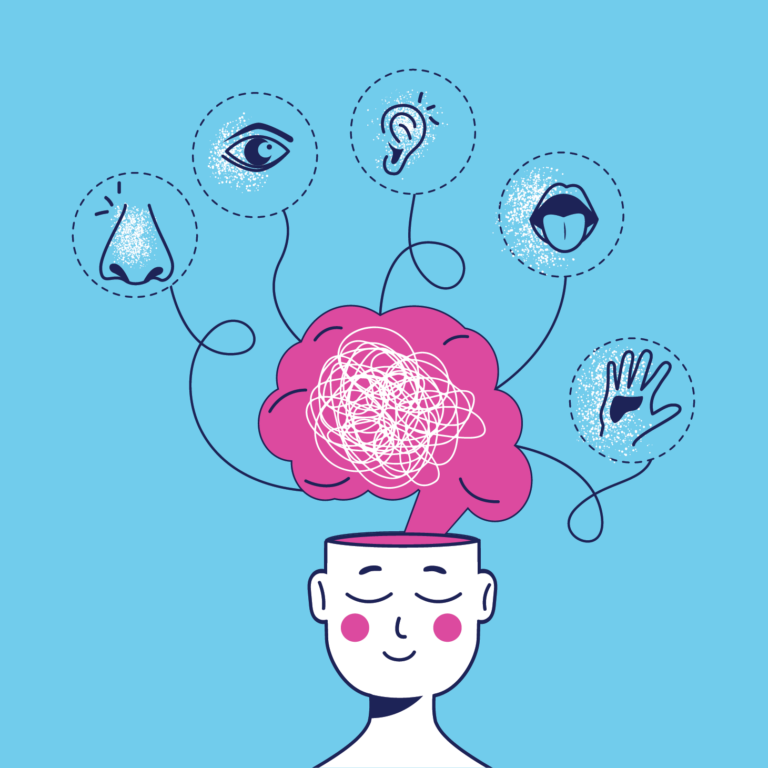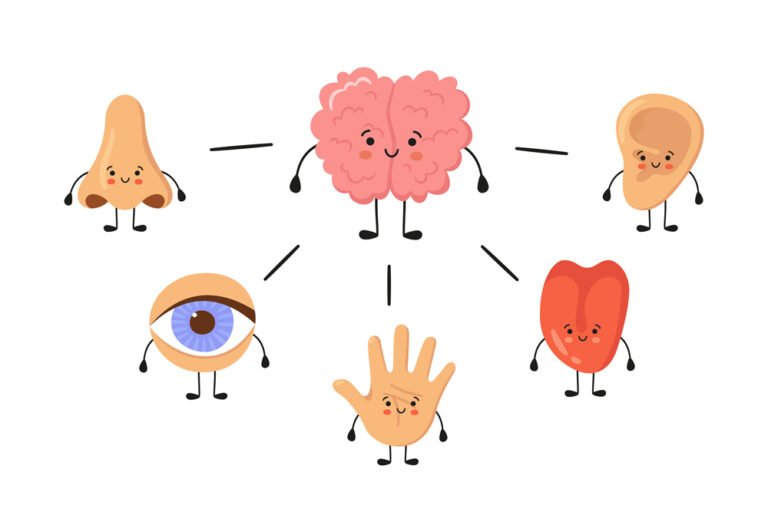As per the CMO & President – Healthcare Business of Mastercard:
Our five senses constantly supply information to our brain. Different parts of the brain process this information and help us make sense of the world. As a brand, you want to enter the minds and hearts of your consumers, customers, and prospects through all their five senses.
Raja Rajamannar

In a traditional brick and mortar store, this task would seem not that daunting, but how about in an increasingly complex and competitive online world? How do you cut through the noise and reach straight to the hearts and minds of the customer? The strategy called “multi-sensory marketing” is aimed at triggering the 5 senses – namely sound, sight, taste, touch, and smell to form meaningful bonds with your audience.
Triggering the five senses in the online space can be challenging. But, with challenges also come opportunities. How can your brand leverage these opportunities to differentiate itself in an increasingly competitive world?
Importance of Triggering the Five Senses in an E-commerce World
The sound of waves hitting the beach, the clicking shut of an overhead locker, the airline safety announcement, the squeals of excited children – an ASMR (Autonomous Sensory Meridian Response) experience capturing all these sounds while casually browsing social media might have you immediately craving a vacation.

That’s the power of sound in evoking an emotion – in this case, a sense of adventure and relaxation. Now imagine the collective experience of all the senses working together. Any experience that we have due to the stimulation of these sensory channels leads to attitude formation, word of mouth, and buying decisions.
Challenges of Multi-Sensory Marketing During an Omni-Channel Customer Journey
Interaction in the online environment is largely dependent on decoding a message based on mental image and perception while viewing text, images and videos. This makes use of one sense (sight) or, in the best case, two senses (sight & sound) whenever audio is available.
When compared to a full sensory experience in a real-world scenario, an online environment is not rich enough from a sensory perspective for the user to have a full experience of the product. This limited extent of multi-sensory interaction in the online environment may affect the evaluation of the product leading to a refusal to buy or possible dissatisfaction when the shipment arrives.

Physical evaluation creates tangible representations of the products. Touching or even being able to imagine touching a product may lead to increased value perception as opposed to just visuals and sound. As a result of these limitations, marketers and digital customer experience specialists are looking for new ways to compensate for the sensory deprivations in the digital space.
Online sales have grown by 162.5 % between 2012 and 2022 (1), with convenience, and ease of return being some of the major draws for customers. As per Statista, the current lack of multi-sensory interaction with the online environment is a missed opportunity given that our time online is constantly increasing.
How to Compensate for the Sensory Deprivations Online?
It can at times become difficult to differentiate between online offerings. For example, images tend to look similar after a point and do not provide a lasting memory. Multi-sensory marketing becomes even more important in the online scenario as it provides consumers with more dimensions to the product as opposed to just a flat, two-dimensional one. So, how can the multi-sensory experiences be leveraged to compensate for the sensory deprivations online?
Using Technologies Like SETs & NFTs
When it comes to creating a “webmosphere” (conscious designing of websites to create a positive effect), digital interactive technologies like SETs (Sensory-enabling technologies) can be especially useful. Relying on these technologies can help inform the consumer about the sensory properties of a product like its texture, smell, and even taste. SETs like headphones, touchscreens, AR, VR, and even a whole host of new technologies like digital/smell interfaces must be leveraged to make the multi-sensory online experiences more engaging, immersive, informative, and more enjoyable.
Stimuli in the real-world leads to multi-sensory representations that are often stored in the memory of the customer. For example, the crunch and the taste of a potato chip. Later, exposure to product pictures or stimulating videos, for example, can engage the brain areas that were recruited during the previous experiences which in turn may lead to similar sensations.
For a positive product evaluation in the online world, how can you leverage the SETS? Let’s take a look:
- Visual stimuli like Icons, pictures, fonts, and videos can be adjusted in terms of resolution, color, depth, and size in order to improve customer experience. Pictures and videos paired with words and slogans that describe the feel of the product can give customers an idea of how it is to touch it.
- Multi-sensory experiences can be customized based on people and product if there is an opportunity to do so. For example, NFT (Need For Touch) varies amongst people and on the products themselves. An image or a description might be enough to evaluate a product with more salient geometric features like a smartphone as opposed to a sweater with more salient material properties. Haptic interfaces like vibrotactile interfaces can compensate for the lack of actual touch in people with high NFT. In a study where participants searched for hotels using either a touch screen or a mouse interface, those who used a touchscreen relied on internal sources of information like gut feel and instinct while those using mousepad relied on external objective sources like user reviews and star ratings.
- Leveraging Interpersonal relationships in the online environment by promoting word of mouth through social media can make an entity’s website look more trustworthy and can facilitate a consumer’s trustworthiness, belonging, and community. With video being preferred by 80% of people over written text (2), video marketing using influencers that describe sensory features like smell and taste can generate more interest in the brand.
- Care should be taken by e-commerce brands to provide sensory congruences during product search and during product evaluation. Marketers must make sure that the visual features used to promote products are congruent with other sensory capabilities. A brand that has been successful with this strategy is Mastercard has successfully deployed this strategy where the customers hear a unique sound every time they complete a transaction, building a sonic identity that helps the brand differentiate itself.
Focusing on Providing High Quality Content
Brands can focus on providing outstanding content or messaging to influence target audiences’ behavioral outcomes, leading to the advancement of marketing goals. This can be done by leveraging SNS (Social Networking Sites) like Instagram, a well-designed website to convey content, or other forms of messaging that can evoke memories, emotions and sensations that the brand wants its customer to have on seeing its products. Customers who favorably perceive marketing messages are often likely to purchase the service or product.
Since everything centers around customer experience, the lack of a more holistic sensory experience in the online world can be compensated in the interim by perceived benefits like ease of access, dynamic access to information, and more attractive pricing. Brands could focus on things that they can control while leveraging the current technology available to provide the best sensory experiences and preventing sensory overload at the same time.
Evaluating the Entire Digital Customer Experience
It is no longer an absolute necessity to have a physical store to capitalize on the 5 senses. So many e-commerce businesses successfully operate out of the digital realm, and so many brick & mortar stores are trying to integrate the digital experience into their overall omni-channel marketing strategy, given the pace at which customers are embracing digital channels.

Since the online world is ever-evolving, a brand needs to continuously monitor and improve its digital customer experience to stay ahead of the competition. The digital rating is a first-of-its-kind rating system to assess an entity’s digital worthiness, i.e., the ability to offer a digitally-enabled experience worthy of praise.
Sources & References
(1) zappia.com – 20+ Fascinating Online Shopping Statistics [2023]
(2) nealschaffer.com – The Top 42 Video Marketing Statistics for 2023





